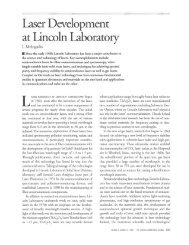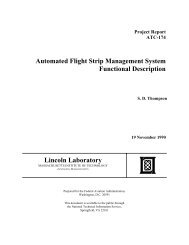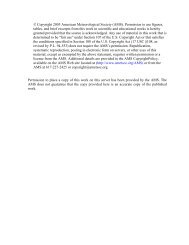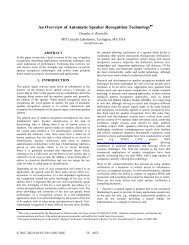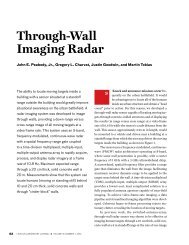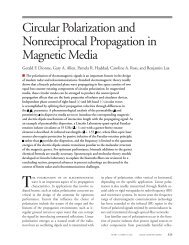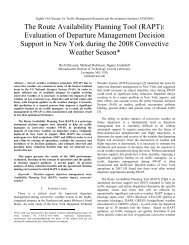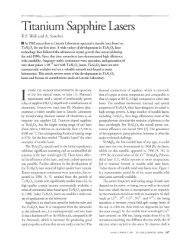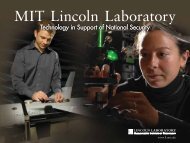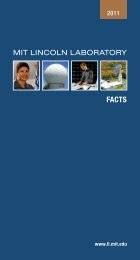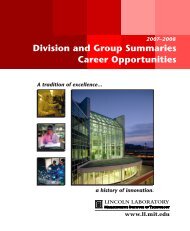2011 Annual Report - MIT Lincoln Laboratory
2011 Annual Report - MIT Lincoln Laboratory
2011 Annual Report - MIT Lincoln Laboratory
You also want an ePaper? Increase the reach of your titles
YUMPU automatically turns print PDFs into web optimized ePapers that Google loves.
technology transfer<br />
“First try, first light.”<br />
Space Surveillance Telescope<br />
On 15 February <strong>2011</strong>, researchers working on the Space<br />
Surveillance Telescope (SST) at North Oscura Peak in<br />
New Mexico sent a jubilant message to the SST sponsor<br />
and developers, “First try, first light!” This success was<br />
the culmination of several years of development.<br />
Under sponsorship of the Defense Advanced<br />
Research Projects Agency (DARPA), the SST program<br />
was initiated in 2002 to develop and demonstrate<br />
technology for a new generation of very wide field-ofview,<br />
synoptic, space surveillance systems capable<br />
of achieving very high search rates, while maintaining<br />
adequate sensitivity to detect very small microsatellites<br />
at geosynchronous distances.<br />
20 <strong>2011</strong> <strong>Annual</strong> <strong>Report</strong><br />
—Researchers working on the<br />
Space Surveillance Telescope<br />
sited at North Oscura Peak,<br />
New Mexico, 15 February <strong>2011</strong><br />
To meet these requirements, the SST required a 3.5 m<br />
telescope, much larger than the 1-meter-class groundbased<br />
electro-optical telescopes previously used.<br />
Because the optical design also had to maintain a very<br />
large field of view, an f/1 Mersenne-Schmidt design was<br />
selected, employing three mirrors, corrector optics, and<br />
a curved focal surface that is centrally located within<br />
the telescope structure.<br />
To realize that curved-focal-surface detector, <strong>Lincoln</strong><br />
<strong>Laboratory</strong> developed a unique, curved chargecoupled-device<br />
(CCD) imager that consisted of a<br />
large-format, full-frame, rapid-readout, low-noise<br />
imager that was conformally bonded to a curved silicon<br />
ABOVE: A new<br />
observatory featuring<br />
a traditional rotating<br />
dome enclosure and an<br />
attached control building<br />
was constructed in 2010<br />
to house the SST. The<br />
North Oscura site was<br />
chosen for this telescope<br />
because the mountain top<br />
site provides pristinely<br />
dark, high-altitude<br />
observing.



